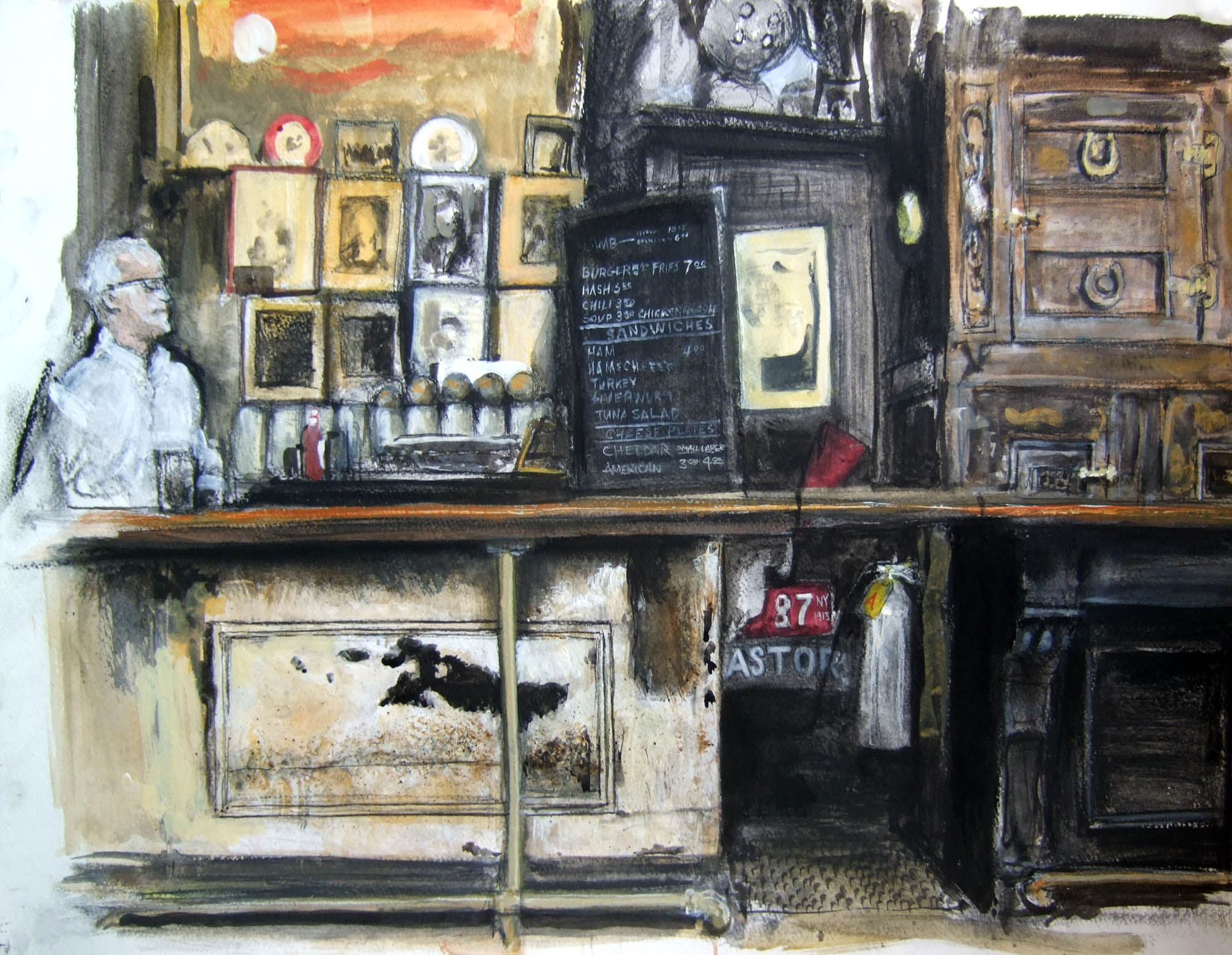Jon Hammer is a painter living and working in New York City. He thinks writing about himself in the third person is plain silly. We’re all adults here, let’s just quit with the bullshit.
A few years ago I started making paintings of some of my favorite bars and restaurants. The idea grew out of a slow-dawning realization that these were all places of a certain age (though a gentleman never asks of course) and that New York City’s perpetual pursuit of novelty, coupled with a real estate market apparently controlled by werewolves, had to mean some of these joints might eventually disappear. I had specific personal and unabashedly sentimental reasons for my choices. No attempt was made to do a survey of every bar in Manhattan which had survived Prohibition, for example. These were simply some places I liked and wished would live forever. From a technical standpoint, there was the job of translating some of the magic of these three dimensional spaces onto a flat surface. From the beginning it was clearly less about the banal proportions of commercial architecture in the Big City and much more to do with my own reaction to being there. Somewhat paradoxically, this problem was better solved by a composition with fewer people. Later, I came to see this as a way of forecasting the inevitable demise of these spots; the emptiness suggesting a future hole in our lives after the place vanishes.
As expected, some of these subjects have disappeared. A business can’t live forever. There are some holdouts, and you can be sure I celebrate them as often as I can. The survival of McSorley’s Old Ale House is nothing less than a miracle (and if you can convince me your god is responsible you will see me in church every Sabbath) but a miracle is a rather singular exception. A surprise came when I realized it wasn’t a handful of dear old saloons that would die, but entire genres of eating and drinking establishments. In the past couple of decades — and I hardly need to add the currently ubiquitous modifier “exacerbated by the Pandemic” — dining and drinking culture has changed drastically. Children, ask your parents, or better still your slightly sodden fun uncle, about these past pillars of New York society: The Old Man Bar; The Steam-Tray Irish Pub, aka Blarney Stone; The Tradesman’s Bar, including sub-genres The Artists’ and The Writers’ Bars; all practically extinct in Manhattan. You can add the red-jacket Spanish restaurants that once dotted the Village like over-cooked shrimp in a dry paella; Bohemian espresso cafés unaffiliated with any multinational brand; and checked-tablecloth Mom-and-Pop red sauce spaghetti parlors, though specimens are easier to find in the outer boroughs. There are dozens of reasons an individual restaurant may fail, but when whole categories cease to exist then clearly something fundamental has changed. No doubt the economics of keeping any small business afloat are impossible now. I would add that some of the social functions served by bars in the past have been replaced by technology. Digital social networks now make the connections that once depended on hanging around restaurants and gin mills populated by members of one’s vocation. Dating apps obviate much of the need for the fern bars and meat markets of yore. The very idea of living without a cell phone today is so horrific as to defy description, but there was a time within memory when some people went without the convenience, relying on the corner tavern for a quiet phone booth and an unofficial mailbox. Of course today no one gets calls or picks up mail at their local boozer, because no one actually makes telephone calls or writes letters. Never-ending change is the sea we all swim in, with the one constant being the New York City you were born in, or moved to, no longer exists, if it ever did.
While a complete denial of the modern is an attractive fantasy, its impracticalities are for stronger creatures than I, and so you may find me on the world wide web at hammerartwork.com and more frequently @j0nhammer on Instagram.

